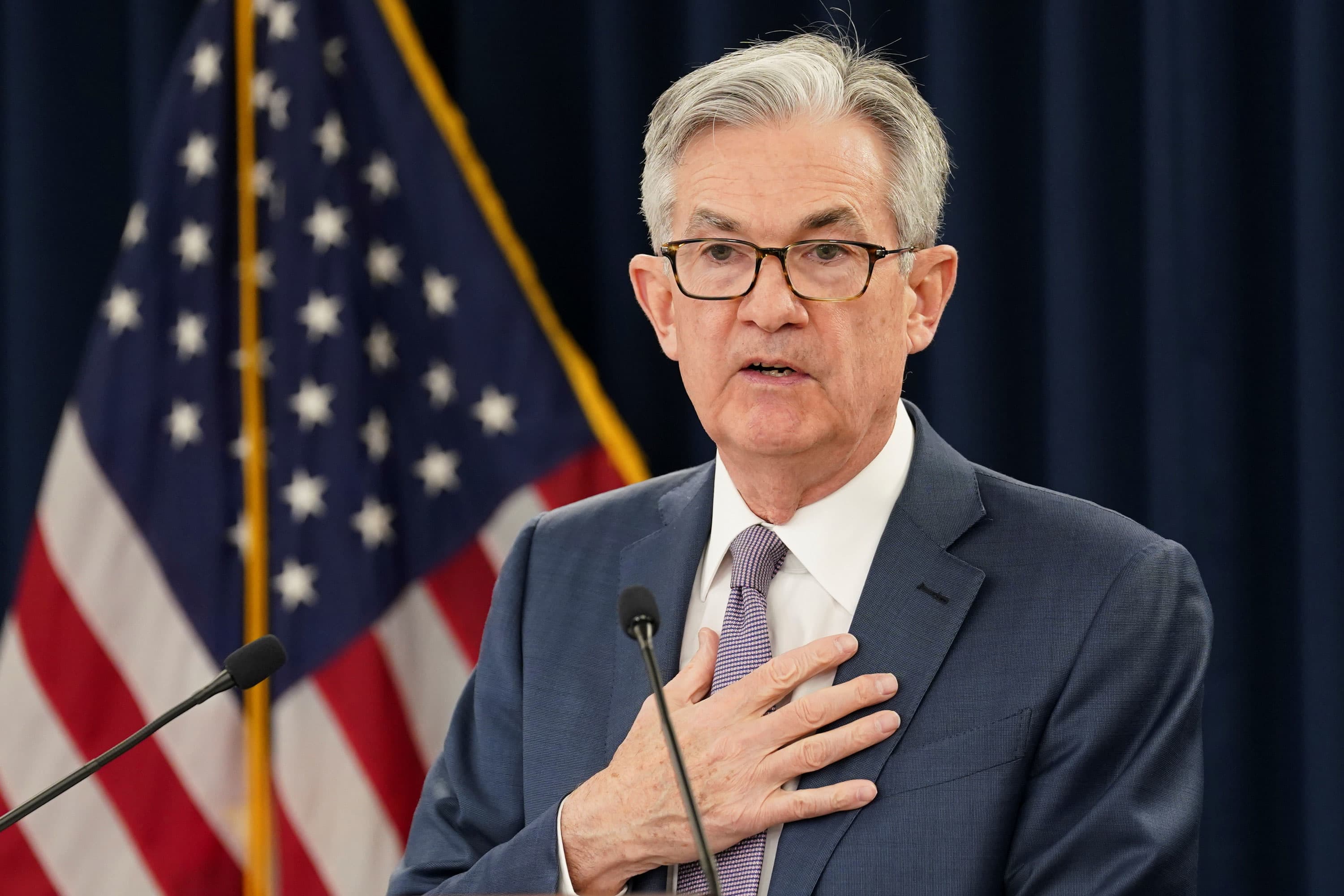Powell announces new Fed approach to inflation that could keep rates lower for longer

The Federal Reserve announced a major policy shift Thursday, saying that it is willing to allow inflation to run hotter than normal in order to support the labor market and broader economy.
In a move that Chairman Jerome Powell called a "robust updating" of Fed policy, the central bank formally agreed to a policy of "average inflation targeting." That means it will allow inflation to run "moderately" above the Fed's 2% goal "for some time" following periods when it has run below that objective.
The changes were codified in a policy blueprint called the "Statement on Longer-Run Goals and Monetary Policy Strategy," first adopted in 2012, that has informed the Fed's approach to interest rates and general economic growth.
As a practical matter, the move means the Fed will be less inclined to hike interest rates when the unemployment rate falls, so long as inflation does not creep up as well. Central bank officials traditionally have believed that low unemployment leads to dangerously higher levels of inflation, and they've moved preemptively to head it off.
However, a speech Powell delivered to a virtual gathering of the Fed's annual Jackson Hole, Wyoming, symposium, and accompanying documents that codified the new policy, signaled a shift away from the old thinking. The policymaking Federal Open Market Commitee approved the changes unanimously.
"Many find it counterintuitive that the Fed would want to push up inflation," Powell said in prepared remarks. "However, inflation that is persistently too low can pose serious risks to the economy."
The chairman's speech began two minutes before the scheduled 9:10 a.m. ET embargoed release that financial markets had been expecting. His remarks did not initially draw a strong reaction, but stock market futures later moved higher and major averages rose in morning trade.
Powell noted that the interest rate level that neither constrains nor pushes growth has fallen considerably over the years and is likely to stay there.
He contrasted the current situation to what the Fed faced 40 years ago, when then-Chairman Paul Volcker ushered through a controversial series of rate hikes that sought to tamp down inflation. Over the years, fundamental changes in the economy, such as demographics and technology, have shifted the Fed's focus to inflation that has run too low.
The situation, Powell said, "can lead to an unwelcome fall in longer-term inflation expectations, which, in turn, can pull actual inflation even lower, resulting in an adverse cycle of ever-lower inflation and inflation expectations." Policymakers, consequently, are left with little room to lower rates during times of economic stress.
Since the end of the financial crisis, the Fed has struggled to hit its 2% inflation target. Officials hope that the new approach will change the landscape, raising expectations and allowing inflation to float higher as rates remain low.
While Powell did not specify how much higher he'd like to see inflation run, Dallas Fed President Robert Kaplan later in the day told CNBC that he would be content with a range around 2.25%-2.5%.
"Right now, to put it in context, we have an unemployment rate that's well above 10%," said Kathy Jones, head of fixed income at Charles Schwab. "The chances of seeing significant inflation anytime soon are quite slim. With or without this policy change, the Fed was going to be at zero for a couple of years."
Change to employment approach
In addition to the shift on inflation, the Fed also announced a policy tweak that changes the approach to employment.
The new language says the approach to the jobs situation will be informed by the Fed's "assessments of the shortfalls of employment from its maximum level." The prior language referred to "deviations" from the maximum level.
While the shift appears to be a matter of verbiage, Powell said it is significant.
"This change reflects our appreciation for the benefits of a strong labor market, particularly for many in low- and moderate-income communities," he said. "This change may appear subtle, but it reflects our view that a robust job market can be sustained without causing an outbreak of inflation."
The Fed has expressed concern about the impact the coronavirus pandemic has had on those least able to shoulder it, so the change in language represents a move to address the situation as the economy recovers.
Powell said the Fed will not set a specific goal for the unemployment rate but rather will allow conditions to dictate what it considers full employment. Previous Fed forecasts had expected inflation to rise well ahead of the 3.5% generational low that unemployment had hit before the pandemic, but that did not happen.
Powell said the Fed remains of the belief that 2% inflation is still the proper target over time.
While Powell did not specify how much higher he'd like to see inflation run, Dallas Fed President Robert Kaplan later in the day told CNBC that he would be content with a range around 2.25%-2.5%.
Source
Check Our More
No comments